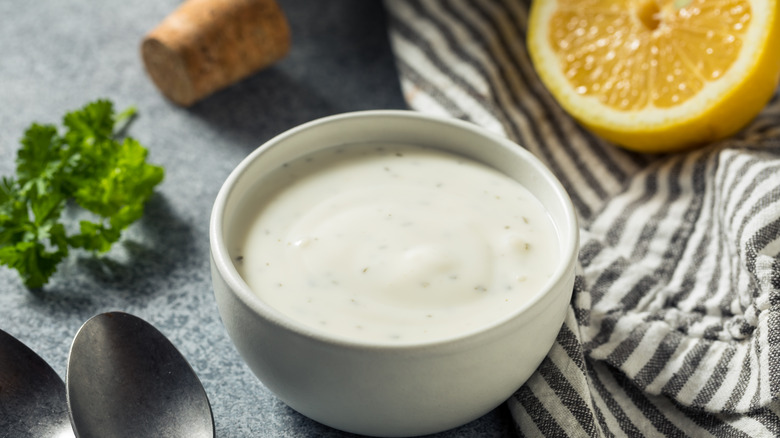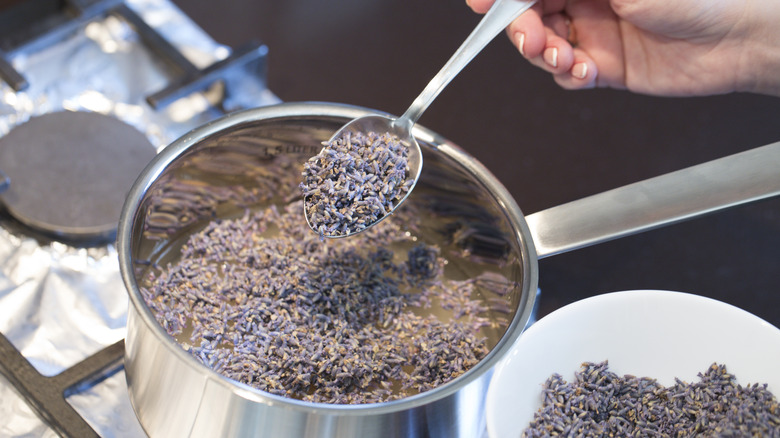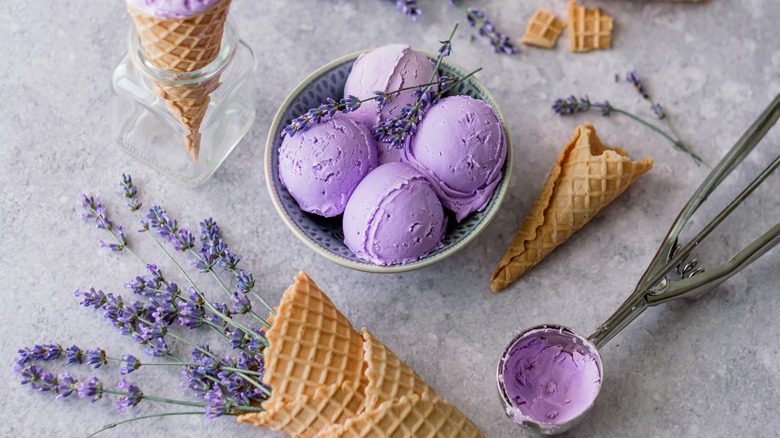Ranch Dressing Is Better With A Floral Secret Ingredient
Ranch dressing is one of America's favorite condiments, with commercial sales of it reaching almost $103 million in 2021 (via Statista), making it more popular than even ketchup. Originally created by a plumber in Alaska in 1949, the creamy, zesty dressing has become a culinary staple, going with everything from salads and chicken tenders to french fries and pizza.
Traditionally made with buttermilk, mayonnaise, garlic, and herbs, a simple homemade ranch dressing recipe can be elevated with other additions such as roasted garlic, hot sauce, or fresh grated cucumber. But have you ever tried adding lavender? Often found in herbes de Provence seasoning blends, culinary lavender has a distinctive floral aroma and herbal flavor.
Beyond being used for soaps, skincare, and fragrances, cooking with lavender can add a unique complexity to both sweet and savory dishes. When added to ranch dressing, lavender's flavor pairs well with the other herbs such as rosemary, oregano, and dill, and also complements the richness of the buttermilk.
Chop dried lavender buds so the flavor isn't overpowering
While all lavender is technically edible, there are 47 different species within the lavender genus, and the flavors can vary widely, with some tasting unpleasantly camphor-like. When using lavender for cooking, it's important to ensure that it's specifically marked as culinary or food-grade lavender.
English lavender (or Lavandula angustifolia) is the species most commonly for cooking, as it has a sweeter and lighter floral taste. The lavender buds may be very small, but the floral flavor can be powerful. And unlike some other herbs, the flavor becomes more intense once they're dried. So if you're tentative about adding this flower to your ranch, finely chopping the dried buds can help prevent the taste of the plant from dominating the dressing.
Also, keep in mind that a little goes a long way when using lavender in cooking, so try adding just a small amount of the chopped dried buds — around ¼ of a teaspoon — to the other ranch dressing ingredients. This will give the creamy dressing a more delicate floral flavor, without the risk of it tasting overly-perfumed, soapy, or bitter.
Use lavender to enhance to flavor of other foods
In addition to salad dressings like ranch, culinary lavender can also be used to decorate the actual salads, too. A light sprinkling adds a beautiful touch of color as well as a unique flavor to earthy green vegetables, and just like how the plant pairs well with a rich dressing, it also goes well with any creamy cheeses you use in a salad.
Other rich and savory dishes can also benefit from a little lavender, creating a balance of complex flavors. Fattier meats such as duck breast take on a deliciously different dimension if you coat the meat in honey and lavender before serving. You can also add the chopped, dried buds to a pan sauce.
Lavender also works well in sweet dishes, especially alongside rich, creamy ingredients. Try it in ice cream, panna cotta, or crème brûlée for a fresh, fragrant take on classic desserts. You can also add it to a lemon cake or lemon posset for an aromatic end to a meal. Or try a variant on the lavender and buttermilk pairing and add the flower to buttermilk pancakes for a tasty Provençal-inspired twist.



